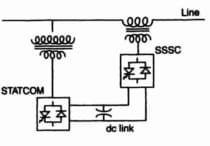 |
| Electrical Materials MCQs |
1. Material science deals with_______.
a. Solids and vapours
b. Gases abd Liquids
c. Molten metals
d. Solid materials
2. Which of the following
is/are mechanical property______.
a. Susceptibility and
retentivity
b. Proof of resilience and creep
c. Passivity and pH-value
d. Specific heat abd thermal
fatigue
3. A unit cell is________.
a. An agglomerated block of
crystal
b. A cube containing the
largest number of atoms
c. The basic building block
of crystal
d. The smallest group of atoms which when regularly repeated forms the
crystal
4. Assertion (A): A unit
cell is analogous to a brick used in the building construction.
Reason (R) : A unit cell is
defined as the basic structural part in the composition of materials.
a. A is false but R is true
b. A is but R is false
c. Both A and R are true but
R is not the correct explanation of A
d. Both A and R are true but R is
the correct explanation of A
5. Consider the following
statements:
1. The crystal directions of
a family must be parallel to one another
2. Crystal directions and
crystal plane are denoted by the Miller indices
3. In cubic crystals, a
crystal plane and a crystal direction normal to it have different indices
4. The effective number of
lattice points in unit cell is highest in case of face centered cubic space
lattice
Which of the statements
given above is/are correct?
a. 2, 3 and 4
b. 2 and 4
c. 1, 2 and 3
d. 4 only
6. The number of Bravais
space lattices with two lattice points are_______.
a. 5
b. 4
c. 3
d. 2
7. The atomic diameter of an FCC crystal (lattice parameter is a)
is_________.
a. `\frac{a} {2}`
b. `\frac{a\sqrt{3}}{4}`
c. `frac{a\sqrt{2}}{4}`
d.`frac{a\sqrt{2}}{2}`
8. If there are six electrons in the d orbital of a transition metal, the
number of unpaired electrons are______.
a. 0
b. 5
c. 6
d. 4
9. The thermal expansion of materials arises from______.
a.
Asymmetry of potential energy curve
b. Weak bonds
c. Thermal vibrations
d. Strong bonds
10. Hydrogen bonds are stronger
than_______.
a. Covalent bonds
b. Ionic bonds
c. Metallic bonds
d. Vander
walls bonds
11. The miller indices of a plane are proportional to______.
a. Interplaner spacing
b. The intercepts of the planes on the coordinate
axes
c. The square of unit cell dimensions
d. The
reciprocal of numerical parameters of the intercepts
12. A material having different properties in different directions is known
as_______.
a. Metal
b. Crystalline
c.
Anisotropic
d. Isotropic
13. What is the Miller indices (h, k, l) of a plane whose intercepts are a,
b/2 and 3c on x, y and z axes respectively in a simple cubic unit cell?
a. (3, 1, 6)
b. (3, 6,
1)
c. (6, 3, 1)
d. (1, 3, 6)
14. A metal which possesses body centered tetragonal structure is______.
a. Nickel
b. Aluminium
c. Tin
d. Vanadium
15. Which of the following is not a member of ceramic family?
a. Lime
b. Ferrites
c. Garnet
d. Bainite





0 Comments
If you have any doubt, feel free to ask.